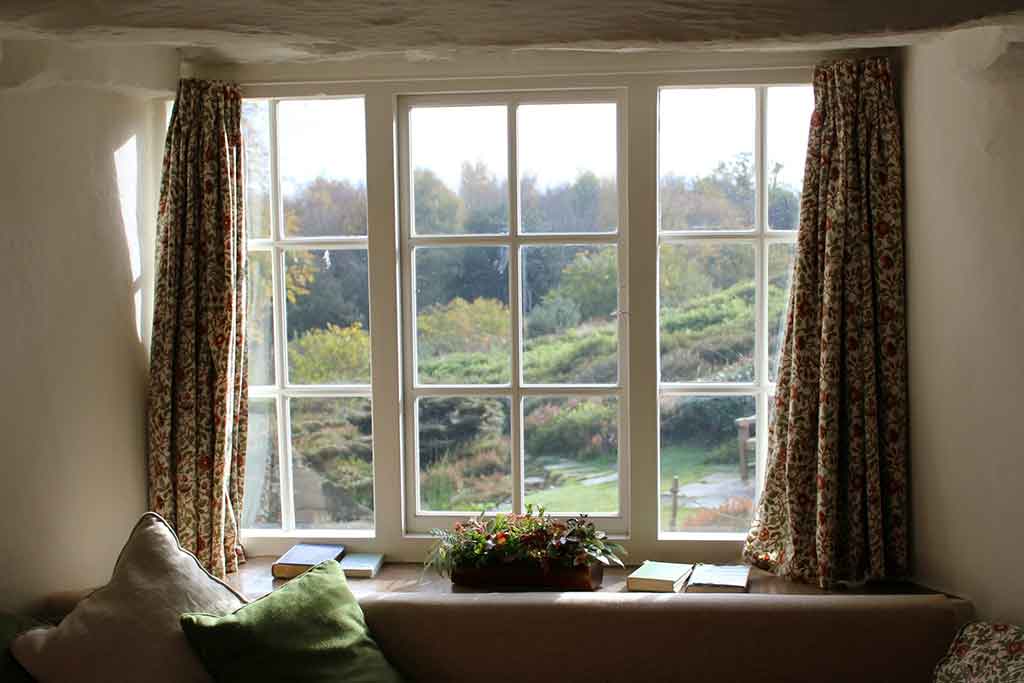What Window Sizes Are Standard?|Choosing the Right Windows

Building a home can be an expensive proposition. The costs can add up if you choose to go with custom window sizes. Most window manufacturers offer standard dimensions for their products. These set sizes ensure that windows can fit a specific range of rough frames. Knowing these sizes beforehand can allow you to design and build your home in a cost-effective manner. Standard window sizes start at 24 by 24 inches and can increase, in even numbers, to 96 by 96 inches. However, buying a standard window size is a little more technical.
Even the standard window sizes come with ‘a half-inch less’ measurement so that builders can achieve the right fit in the gray structure of your house. Therefore, even with a non-custom window, homeowners must be careful. Are you building your home and confused about which window size to get? In this article, we will look at the standard window sizes available in the market. We will also underline the factors which can influence your purchase decision.
I.The Most Common Window Size

Custom designs are not the conceptual foundation of every house. In regular constructions, rough frames are close to standard window size. Naturally, this is cost-efficient and less time-consuming. Many retailers and manufacturers always have standard window sizes. Of course, there are variations, but two sizes are readily available. These are standard window sizes which are 2 by 2 feet and 4 by 4 feet. In conventional metrics, these sizes translate to 24 by 24 inches or 48 by 48 inches, respectively. These windows are a half-inch smaller than the typical size to enable for a more precise fit in tight locations. Therefore, a 24 by 24-inch window will measure 23 ½ by 23 ½ when you buy it. The same is true for 4 by 4-foot windows too.
Inches (in) | Foot (ft) | Centimetres (cm) | |||
|---|---|---|---|---|---|
Width | Height | Width | Height | Width | Height |
24 | 18 | 2 | 1.5 | 61 | 45.72 |
24 | 24 | 2 | 2 | 61 | 61 |
24 | 36 | 2 | 3 | 61 | 91.44 |
24 | 48 | 2 | 4 | 61 | 121.92 |
24 | 52 | 2 | 4.3 | 61 | 132 |
24 | 58 | 2 | 4.8 | 61 | 147.32 |
24 | 60 | 2 | 5 | 61 | 152.4 |
24 | 62 | 2 | 5.2 | 61 | 157.5 |
24 | 72 | 2 | 6 | 61 | 182.88 |
24 | 84 | 2 | 7 | 61 | 213.36 |
24 | 96 | 2 | 8 | 61 | 243.84 |
*Similar heights are also available in 3 feet (36 inches), 4 feet (48 inches), 5 feet (60 inches), 6 feet (72 inches) and 8 feet (96 inches) width. Also, all sizes have a half-inch taken away from the standard sizes for better fitment.
1.Picture Window Standard Sizes

The motive behind installing a picture window is to give any apartment or room an elegant yet clean appearance. Moreover, these windows do not open and only provide a lovely view from the outside. The ability to remain shut is generally advantageous because standard window sizes can be wider and higher. Picture windows are available in width ranging from 24 inches to 96 inches with additional dimensions as well. The width of 84 inches is not standard. Custom manufacturing of picture windows in 84-inch width is possible. The size, however, is available in height. The additional picture window heights include 18 inches, 52 inches, 54 inches, and 62 inches. The industry standard of a half-inch less applies to picture windows as well, to fit them more precisely in a tight space.
2.Casement Window Sizes

Unlike picture windows, you can open casement windows to allow for fresh air and ventilation. Casement windows have hinges on one side and are common in areas with a warm environment. Notably, single, or double-hung windows are less efficient at allowing ventilation as compared to casement windows. The standard window size for casement windows ranges from widths of 14 inches to 35.5 inches to heights of 29.5 inches to 77.5 inches. These windows come in a variety of materials, such as wood, aluminum, and PVC. Which ones a customer goes for depends entirely on personal taste and preferences.
3.Sliding Window Sizes

These are one of the most common window types to be used in homes. Although custom measurements are possible, homeowners can purchase off-the-shelf window dimensions for the usual rough slots in their homes. Sliding windows are suitable for use in various rooms, including the kitchen, bedroom, bathroom, basement, and other areas. However, avoid sliding windows in rooms that require protection from the elements, such as air, dust, or other contaminants. For sliding windows, the standard widths available are 36, 48, 60, 72, and 84 inches. In terms of height, there are limited options with only 24, 36, 48, and 60 inches made.
4.Awning Window Sizes
For added style points, awning windows are one of the best and most appropriate. With hinges on the top and free from the bottom, swinging upward. Awning windows are not like the regular bedroom or kitchen windows; they are better suited to patios and similar settings. Moreover, they are made from weatherproof materials so that they can resist the elements. Opening these windows is an incredible way to enjoy the rain as they serve as a canopy while allowing you to enjoy the weather without getting wet. Standard window sizes for these can range. The widths available are from 2 inches to 46 inches, and the heights range from 20 inches to 92 inches.

5.Tilt and Turn Window Sizes
These windows are rather unconventional and not used very often in standard constructions. Tilt and turn windows are usually placed in apartments or places which are at least above the height of one story. These are one-of-a-kind windows that are not suitable for bedrooms or other key parts of the house. As a result, they are put up elsewhere. They come in single, double, and triple tilt and turn configurations and are available for instant purchase in conventional sizes. Sizes for single tilt and turn windows range from 23.6 inches (1.9 feet) by 19.7 inches (1.6 feet) to 74.8 inches (6.2 feet) by 51.2 inches (4.27 feet).
6.Bay Window Sizes
The application of these windows is to open a space within the house to allow more light to enter. Rooms watching over gardens or other mesmerizing outer sceneries are ideal for bay windows. Even a single bay window can uplift the overall space many folds. These windows are a terrific choice for architects, designers, and creative homeowners since they enhance inner and outside aesthetics. There are custom bay windows available still standard window sizes range from 42 inches to 126 inches providing extensive openings for any room.

7.Double-Hung Window Sizes
The vertical placement of double-hung windows differs from the usual horizontal sliding or hinging of windows. These types of windows are often found in homes but on upper floors and in attics etc. The standard window size for double-hung windows ranges in width from 24 inches to 48 inches and in height they can go as high as 60 inches from a minimum of 36 inches. In the United States, double-hung windows are the most popular replacement windows, with nearly every home having at least one.

II.How Do I Know What Window Size I Need?
The calculation of window sizes is part of the house design phase. When building from the ground up, homeowners can work with their respective designers and architects to ensure that they use standard window sizes for all spaces. Custom window sizes cost more and take time to arrive. These windows are an unnecessary hassle unless they are required. Window manufacturers usually denote their products with specific codes that can allow anyone to understand which size they need. For instance, the code 2020, denotes; 2 by 2 feet sizes. Similarly, 3838 refers to window sizes of 44 inches by 44 inches because they are 3 feet 8 inches by 3 feet 8 inches.
III.Measuring Home Windows for Replacement
If you are looking for replacement windows, however, there are a few ways to measure them.
IV.Buy Windows for Your Home Now
Buying windows can be a complicated process given the measurements and other parameters involved. It helps to have a considerate retailer assisting you because they can make the job much easier. It is the job of the window seller to ensure that customers are at ease when making their window purchases as they inspire confidence in them to make the right decision. If you are looking to buy replacement or new windows for your home, get in touch with us today.
There are several types of windows and their application can depend on whether a homeowner is looking for functionality or aesthetic appeal. It is important that standard window size be considered because they are easier to acquire and install. It is not an easy task to purchase windows so make sure you have professional help at hand to minimize the chances of anything going wrong because a mistake can be costly and troublesome.
